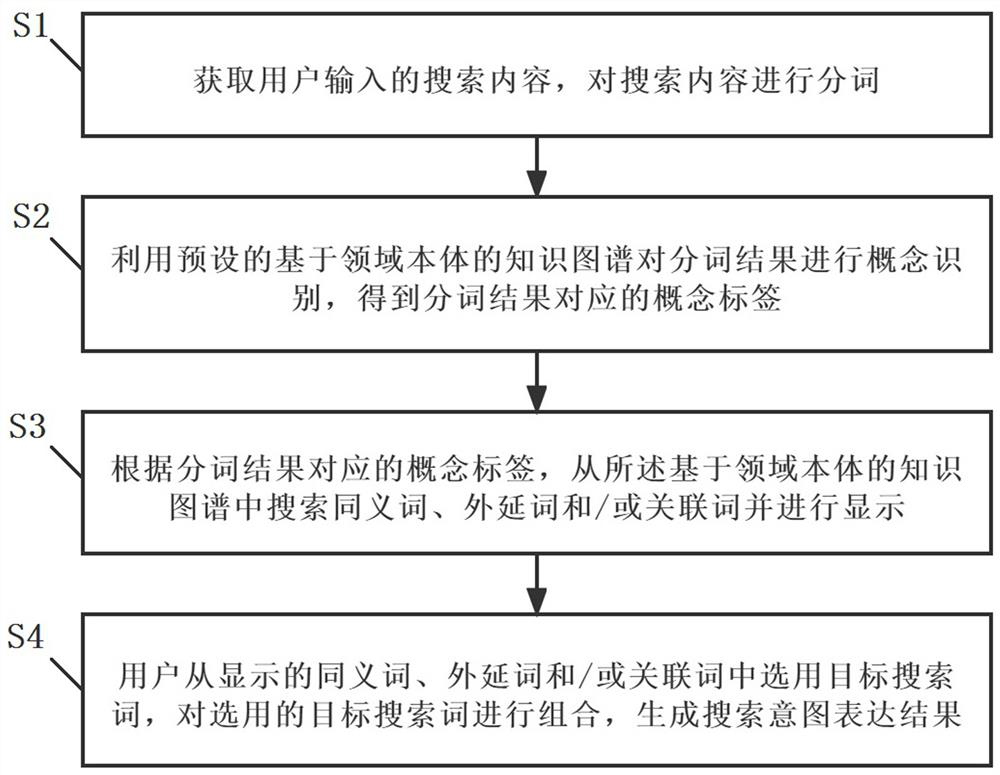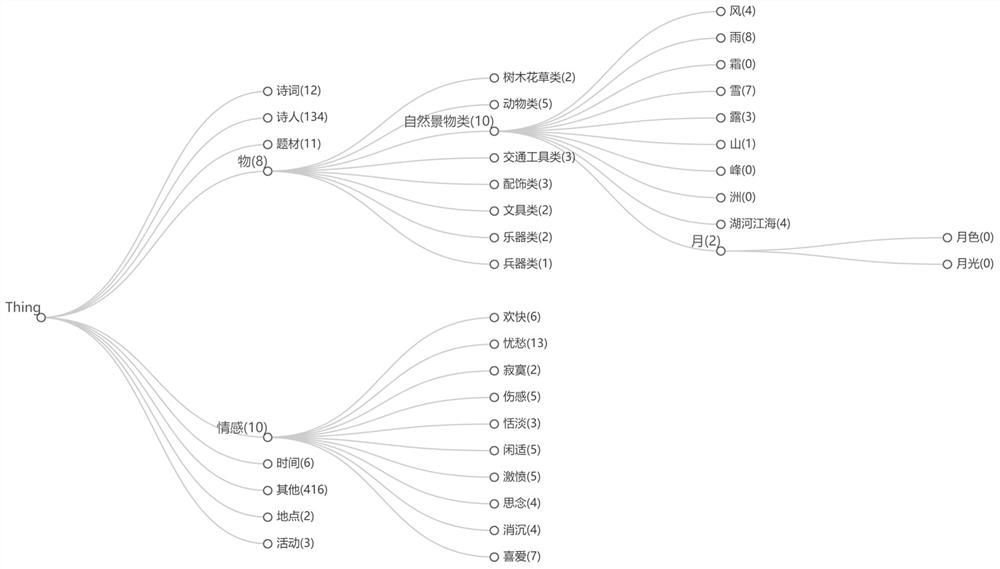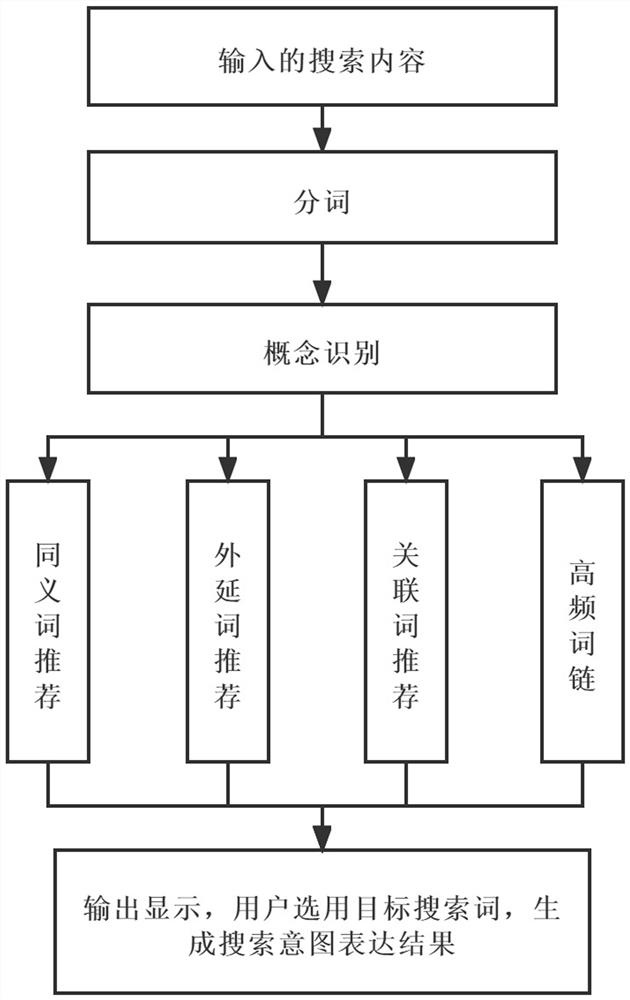A search intent expression method and system based on ontology
A technology of search intent and expression method, applied in the field of knowledge graph, it can solve problems such as affecting the search effect and failing to meet user search requirements, and achieve the effect of accurate search results and improved accuracy.
- Summary
- Abstract
- Description
- Claims
- Application Information
AI Technical Summary
Problems solved by technology
Method used
Image
Examples
Embodiment 1
[0028] The present embodiment proposes an ontology-based search intent expression method, such as Figure 1 Shown, a flowchart of the search intent expression method for the present embodiment.
[0029] The present embodiment proposes a search intent expression method, comprising the following steps:
[0030] S1. Obtain the search content entered by the user and segment the search content.
[0031] S2. Use the preset knowledge graph based on the domain ontology to conceptually identify the word segmentation results, and obtain the concept label corresponding to the word segmentation results.
[0032] S3, according to the concept label corresponding to the word segmentation results, from the knowledge graph based on the domain ontology, search for synonyms, epitaxial words and / or associative words and display.
[0033] S4, the user selects the target search term from the displayed synonyms, epitaxial terms and / or associative terms, combines the selected target search terms, and gen...
Embodiment 2
[0040] The present embodiment proposes an ontology-based search intent expression method, such as Figure 3 Shown, a flowchart of the search intent expression method for the present embodiment. These include the following steps:
[0041] S1. Obtain the search content entered by the user and segment the search content.
[0042] In this step, the search content such as keywords entered by the user, logical combinations of keywords, sentences, and text is divided, and the word segmentation results are obtained, which are used for further concept recognition and search intent generation.
[0043] S2. Use the preset knowledge graph based on the domain ontology to conceptually identify the word segmentation results, and obtain the concept label corresponding to the word segmentation results.
[0044] In the present embodiment, the domain ontology based on the domain ontology in the knowledge graph comprises a set of concepts, a set of attributes, a set of individuals, and a set of facts;...
Embodiment 3
[0065] The present embodiment proposes an ontology-based search intent expression system, applying the search intent expression method proposed in Example 1 or Embodiment 2. as Figure 4 As shown, the search intent expresses the architecture diagram of the present embodiment of the system.
[0066] The search intent expression system proposed in the present embodiment includes a human-computer interaction module, a word segmentation module, a knowledge graph module, a concept recognition module, a recommendation word generation module and a search intent expression generation module.
[0067] Wherein, the word segmentation module is used to segment the search content obtained by the human-computer interaction module.
[0068] The Knowledge Graph module stores a preset knowledge graph based on domain ontologies. The domain ontology in the knowledge graph includes a set of concepts, a set of attributes, a set of individuals, and a set of facts. Wherein, the property collection includ...
PUM
 Login to View More
Login to View More Abstract
Description
Claims
Application Information
 Login to View More
Login to View More - R&D
- Intellectual Property
- Life Sciences
- Materials
- Tech Scout
- Unparalleled Data Quality
- Higher Quality Content
- 60% Fewer Hallucinations
Browse by: Latest US Patents, China's latest patents, Technical Efficacy Thesaurus, Application Domain, Technology Topic, Popular Technical Reports.
© 2025 PatSnap. All rights reserved.Legal|Privacy policy|Modern Slavery Act Transparency Statement|Sitemap|About US| Contact US: help@patsnap.com



